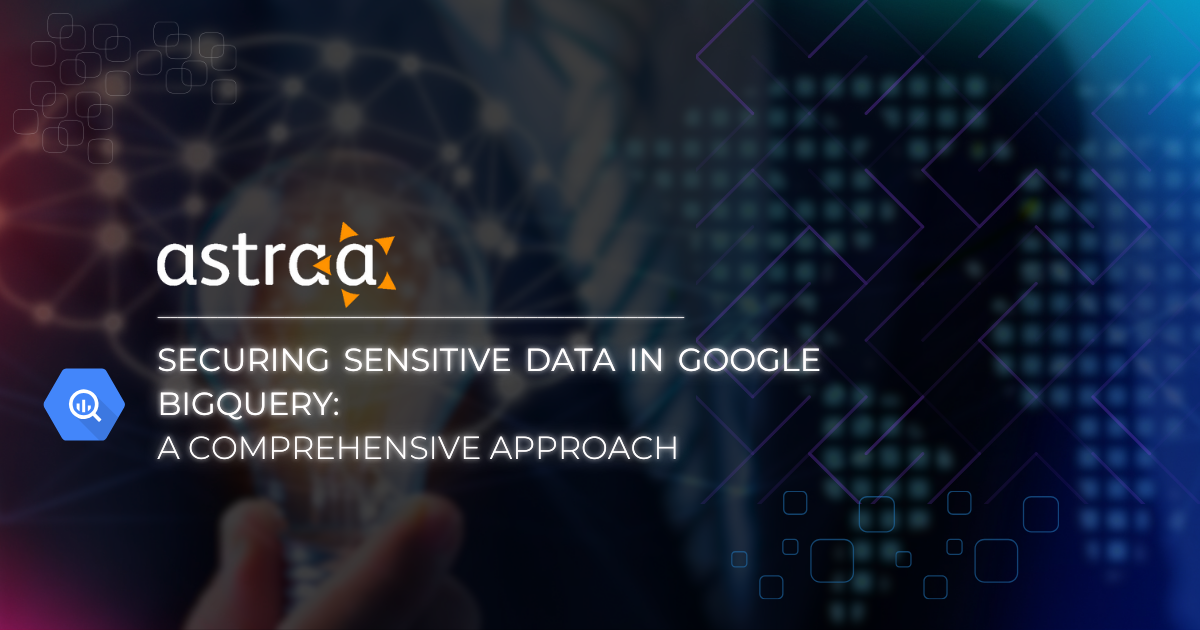
Don’t let data security hold back your analytics potential
Are you struggling with securing sensitive data while maintaining analytical capabilities in your BigQuery environment? You’re not alone. In my years working with cloud data warehouses, I’ve found that implementing the right security controls at the right level is crucial for balancing compliance requirements with business needs. This often feels like a tightrope walk: on one side, the need to protect sensitive information from unauthorized access and comply with regulations like GDPR, HIPAA, and CCPA; on the other, the equally important need to empower data analysts and business users with the insights they need to drive decision-making. Let me walk you through the strategies that have proven most effective.
The Business Case: Why This Matters
Implementing proper security controls delivers several key benefits:
- Enhanced Governance & Compliance
Maintain comprehensive audit trails
Demonstrate regulatory compliance (GDPR, HIPAA, CCPA)
Implement consistent data policies
- Better Developer Experience
No need for duplicate, filtered datasets
Security handled at database level, not application layer
Self-service analytics with appropriate guardrails
- Operational Efficiency
Centralized management reduces overhead
Less data duplication means lower storage costs
Streamlined permission management
Real-World Use Cases :
- Financial Services / Bank : At a major fintech company, we needed to ensure analysts could access transaction patterns without seeing PII. Column-level security was the game-changer here.
- Healthcare: For a healthcare provider managing patient data under HIPAA, implementing row-level security will enable physicians to only see their patients’ records while administrators accessed billing information without clinical details.
- Retail: When working with a leading e-commerce platform, using column-level security approaches will ensure marketing teams to analyze purchase behavior without accessing customers’ personal information.
- Multi-tenant SaaS: For B2B SaaS providers storing client data in a single BigQuery environment, strict data segregation between customer accounts was non-negotiable. Row-level security provided the solution.
BigQuery Security:
BigQuery offers five primary security models, each addressing different dimensions of data protection:
Table-level security
Your first line of defense, controlling access to entire tables
Row-level security
Horizontal filtering, allowing users to see only specific data rows
Column-level security
Vertical filtering, restricting access to sensitive fields
Dynamic Data Masking
Sometimes you need to provide access to data structures while obscuring the actual sensitive values.
Authorized Views
Controlled Access With/Without Row Filters
Key Features and Implementation Approaches
Think of table-level security as your perimeter defense. It’s the simplest to implement but provides only coarse-grained control.
Key Features:
- Implemented through Google Cloud IAM
- Permission inheritance from project to dataset to table
- Quick to set up, easy to audit
Implementation:
— Basic table access control
GRANT `roles/bigquery.dataViewer` ON TABLE `project.dataset.table` TO "user:analyst@company.com";
Pro tip: Organize tables into datasets based on sensitivity levels. This simplifies permission management tremendously when working at scale.
Need to ensure regional teams only see their territories’ data? Row-level security offers dynamic filtering capabilities.
Key Features:
- SQL-based filtering predicates
- Integration with user authentication
- Dynamic context-based restrictions
Implementation:
SQL Method:
CREATE ROW ACCESS POLICY filter_by_department
ON project.dataset.employee_data
GRANT TO ('group:hr@company.com') —> ('user:aatish@company.com')
FILTER USING (department = 'HR');
Pro tip: Be mindful of performance impacts with complex row filters. Consider materialized views for frequently accessed filtered data.
When you need to restrict access to specific fields containing sensitive data, column-level security through Data Catalog policy tags.
- Tag-based access control for specific columns
- Hierarchical classification system
- Centralized management through Data Catalog
Implementation:
Step 1: Create your taxonomy structure:
Allows granular control over data access.Helps in maintaining compliance and
governance.
BigQuery CLI :
bq mk --taxonomy "data_sensitivity_taxonomy"
OR
Using Cloud SDK:
gcloud data-catalog taxonomies create \ --display-name="Data Sensitivity Taxonomy" \ --location=us \ --description="Taxonomy for data sensitivity levels"
Step 2: Define Policy Tags:
Each tag will represent a specific sensitive level.tags can have hierarchical relationships.
Using Cloud SDK:
# Create tags for different sensitivity levels gcloud data-catalog policy-tags create \ --taxonomy-name=[TAXONOMY_ID] \ --display-name="Confidential" \ --description="Highly sensitive data requiring strict access control"
Step 3: Apply Policy Tags to Sensitive Columns:
Marking specific columns.
SQL Method :
-- Apply policy tag to sensitive columns ALTER TABLE `project.dataset.customers` ALTER COLUMN SET OPTIONS ( policy_tags = ['projects/[PROJECT_ID]/locations/[LOCATION]/taxonomies/[TAXONOMY_ID]/policyTags/[TAG_ID]'] );
Cloud SDK Method:
gcloud data-catalog columns tag \ --project=[PROJECT_ID] \ --dataset=[DATASET_NAME] \ --table=[TABLE_NAME] \ --column=email \ --taxonomy=[TAXONOMY_ID] \ --tag=[CONFIDENTIAL_TAG_ID]
Step 4: Configure Access Permissions
Grant Access to Specific Users/Groups
Cloud SDK Method:
# Grant fine-grained access to a specific policy tag gcloud data-catalog taxonomies add-iam-policy-binding \ --taxonomy=[TAXONOMY_ID] \ --location=[LOCATION] \ --member=user:[] \ --role=roles/datacatalog.categoryFineGrainedReader
Pro tip: Create a clear taxonomy that mirrors your organization’s data classification policy. This alignment makes auditing and compliance reporting much simpler.
Sometimes you need to provide access to data structures while obscuring the actual sensitive values. Dynamic data masking provides a flexible solution without duplicating data or creating complex views.
Key Features:
- Apply masks to sensitive data while preserving format and structure
- Configure different masking levels based on user roles
- Implement without changing underlying data
Implementation:
— Create a masking policy for credit card numbers
CREATE OR REPLACE MASKING POLICY project.dataset.credit_card_masking
USING (CASE
WHEN SESSION_USER() LIKE '%@finance.company.com'
THEN cc_number
ELSE CONCAT('XXXX-XXXX-XXXX-', SUBSTR(cc_number, LENGTH(cc_number)-3))
END);
— Apply the policy to a column
ALTER TABLE project.dataset.transactions ALTER COLUMN cc_number SET OPTIONS (masking_policy = 'project.dataset.credit_card_masking');
Advanced Pattern:
For locations with multiple column types requiring similar masking:
— Create a masking policy with selectable levels
CREATE OR REPLACE MASKING POLICY project.dataset.email_masking
USING (CASE
WHEN SESSION_USER() IN (SELECT email FROM project.dataset.admin_users)
THEN email_address -- Full access
WHEN SESSION_USER() IN (SELECT email FROM project.dataset.support_users)
THEN REGEXP_REPLACE(email_address, '(.{2})(.*)(@.*)', r'\1***\3') -- Partial masking
ELSE 'masked@example.com' -- Full masking
END);
Pro tip: Combine data masking with column-level security for defense in depth. Use masking for moderate sensitivity data and column-level security for high sensitivity data.
Challenges to Anticipate
- Performance Considerations: Row-level security particularly can impact query performance. We’ve seen up to 20% overhead with complex filters in production environments.
- Implementation Complexity: Policy tag management requires careful planning. Document your approach thoroughly.
- Monitoring Requirements: Regular access pattern review is essential. Set up logging and monitoring for security events.
The Benefits of Secure Data for AI
- Trust and Reliability: Secure data improves the trustworthiness and reliability of AI models.
- Regulatory Compliance: Strong security controls help AI systems comply with regulations (e.g., GDPR, HIPAA).
- Intellectual Property Protection: Security measures protect valuable data used to train AI models.
- Data Sharing and Collaboration: Secure data handling enables safe data sharing for AI development.
In summary, securing data in BigQuery is not just about compliance and risk management; it’s also a key enabler for building trustworthy, reliable, and ethical AI systems.
Leveraging AI for Enhanced Data Security in BigQuery
In summary, securing data in BigQuery is not just about compliance and risk management; it’s also a key enabler for building trustworthy, reliable, and ethical AI systems.
- Automated Data Classification: AI can be used to automatically classify data based on its sensitivity level, enabling more efficient and accurate application of security policies. For example, machine learning models can be trained to identify PII, PHI, or other sensitive data types, and automatically tag the corresponding columns with the appropriate policy tags.
- Anomaly Detection: AI algorithms can analyze data access patterns and user behavior to detect anomalous activities that may indicate a security threat. For instance, if a user suddenly starts accessing a large amount of data that is unusual for their role, the system can flag this activity for further investigation.
- Dynamic Risk Assessment: AI can be used to dynamically assess the risk associated with specific data access requests. By considering factors such as user roles, data sensitivity, and the context of the request, AI can determine whether to allow, deny, or modify the access.
- Automated Policy Enforcement: AI can help automate the enforcement of security policies, reducing the risk of human error and ensuring consistent application of controls. For example, AI can be used to automatically revoke access to data when a user’s role changes or when a data retention policy expires.
- Threat Prediction: By analyzing historical security data and identifying patterns, AI can help predict potential security threats before they occur. This can enable organizations to take proactive measures to prevent breaches and data loss.
By leveraging AI in these ways, organizations can significantly enhance their data security posture in BigQuery, making it more efficient, robust, and adaptable to evolving threats.
Putting It All Together
In my experience, most enterprise implementations benefit from a layered approach:
- Start with table-level organization as your foundation
- Apply column-level security to protect specific sensitive fields
- Implement row-level filtering where dynamic access control is needed
This combination provides comprehensive protection while maintaining the analytical capabilities that make BigQuery so valuable.
Next Steps
Ready to implement these security measures in your BigQuery environment? Begin with an audit of your data sensitivity levels and user access requirements. Then, start with table-level security basics before moving to more granular controls.
Remember: security is a journey, not a destination. Regular reviews and adjustments ensure your controls remain effective as your data and organization evolve.
We, at Astraa, a Saama brand, would love to hear your thoughts—what are the security measures you implemented in your BigQuery environment?

